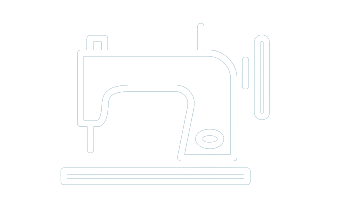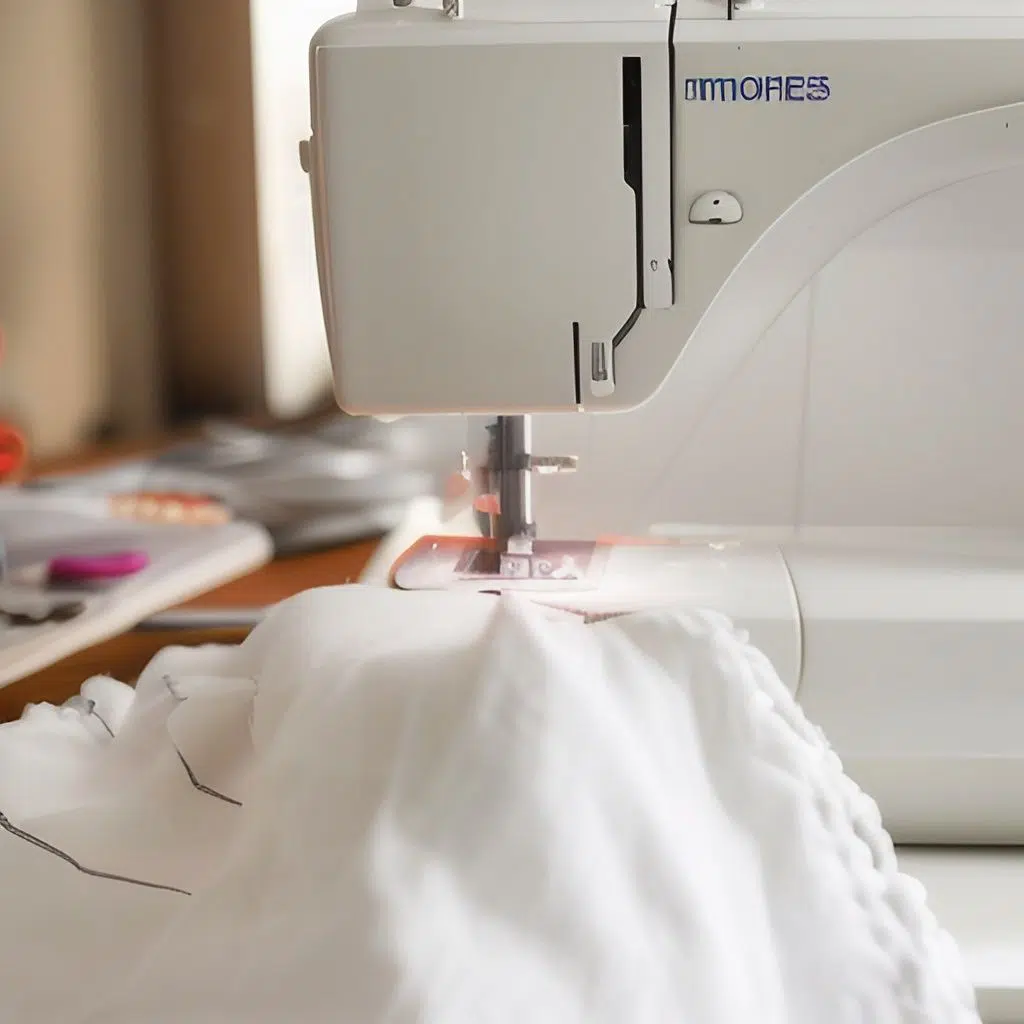Best Sewing Machine Under $200
Sewing machines have been a crucial tool in our lives for decades, allowing us to create clothing, accessories, and home decor with ease and efficiency. Whether you’re a seasoned seamstress or a beginner, a good sewing machine can make all the difference in your projects. However, high-quality sewing machines can often come with a hefty price tag, leaving many aspiring sewists feeling discouraged.
We will explore the best options for those looking to buy a sewing machine on a budget, without sacrificing quality and functionality. We’ll cover the key factors to consider when choosing a machine, review some of the top models available, and offer tips and tricks for getting the most out of your sewing machine under $200.
Top options Best Sewing Machine under $200
Singer 4423 Heavy-Duty Sewing Machine
Singer 4423 Heavy-Duty Sewing Machine

Features
- 23 built-in stitches
- Heavy-duty metal frame for durability
- High sewing speed of up to 1,100 stitches per minute
- Automatic needle threader for easy threading
- Adjustable stitch length and width
Pros
- Can handle thick fabrics and multiple layers
- Fast sewing speed saves time
- Easy to thread the needle
- Comes with several accessories including a walking foot and zipper foot
Cons
- Some users report issues with the tension system
- Can be noisy when sewing at high speeds
Price
- Around $199
Brother XM2701 Lightweight Sewing Machine
Brother XM2701 Lightweight Sewing Machine

Features
- 27 built-in stitches
- Lightweight and portable
- Automatic needle threader
- Jam-resistant top drop-in bobbin system
- Free arm for sewing cuffs and sleeves
Pros
- Easy to set up and use
- Affordable and great for beginners
- Can handle a variety of fabrics
- Comes with a wide range of accessories
Cons
- May not be as durable as heavier machines
- May struggle with thicker fabrics
Price
- Around $130
Janome 2212 Sewing Machine
Janome 2212 Sewing Machine

Features
- 12 built-in stitches
- Front-loading bobbin system
- Adjustable stitch length and width
- Free arm for sewing cuffs and sleeves
- Drop feed for free-motion sewing
Pros
- Simple and straightforward to use
- Reliable and durable
- Great for basic sewing projects and repairs
- Comes with several accessories including bobbins and needles
Cons
- Fewer built-in stitches compared to other models
- May struggle with thick or heavy fabrics
Price
- Around $180
Singer M 1500 Sewing Machine
Singer M1500 Sewing Machine

Features
- 6 basic stitches including straight, zigzag, and satin stitches.
- Automatic 4-step buttonhole.
- Adjustable stitch length and width.
- Heavy-duty metal frame for stability.
- Automatic needle threader.
- Top drop-in bobbin system with a clear view cover.
- Free arm for sewing cuffs, collars, and other cylindrical items.
- Adjustable presser foot pressure
Pros
- The Singer M1500 sewing machine is a budget-friendly option for those who want a reliable machine for their basic sewing needs.
- With only 6 basic stitches, the Singer M1500 is a user-friendly machine that is easy to operate and ideal for beginners.
- The heavy-duty metal frame provides stability, making it suitable for sewing thick fabrics or multiple layers.
- The automatic needle threader makes it easy to thread the needle, which is especially helpful for those with poor eyesight or shaky hands.
Cons
- With only 6 basic stitches, the Singer M1500 sewing machine may not offer enough variety for advanced or creative sewists.
- The Singer M1500 sewing machine may be louder than some other models, which could be a concern for those who need a quieter machine.
- The Singer M1500 does not have a speed control feature, which could be a drawback for some users who prefer to sew at a slower pace.
Price
- Around $100 to $150
Brother GX 37 Sewing Machine
Brother GX 37 Sewing Machine

Features
- 37 built-in stitches
- Automatic needle threading
- One-step buttonhole
- Adjustable stitch length and width
- Drop-in bobbin system
- Free arm for sewing cuffs and sleeves
Pros
- Easy to use for beginners and intermediate sewers
- Lightweight and portable
- Affordable price
- Wide variety of stitches for different sewing projects
Cons
- Limited number of advanced features compared to higher-end models
- May not be suitable for heavy-duty or industrial sewing projects
- Some users have reported issues with the tension and stitch quality
Price
- Around $180
Singer M3500 Sewing Machine
Singer M3500 Sewing Machine

Features
- 34 built-in stitches
- Automatic needle threader
- Adjustable stitch length and width
- One-step buttonhole
- Free arm for sewing cuffs and sleeves
- Heavy-duty metal frame for durability
- Adjustable presser foot pressure
- The top drop-in bobbin system
Pros
- Easy to use, even for beginners
- Has a variety of built-in stitches to choose from
- Automatic needle threader
- Heavy-duty metal frame
- Adjustable presser foot pressure
- The top drop-in bobbin system
Cons
- Some users have reported issues with the tension of the machine
- It doesn’t come with an extension table, which may be necessary for larger projects
- It doesn’t have a speed control feature, which may be a downside for some users
Price
- Around $170
Factors to Consider When Looking for Sewing Machine Under $200
When looking for a sewing machine under $200, there are several key factors to consider in order to find the best machine for your needs:
Purpose of Use
Consider what type of projects you will be working on with your machine. If you plan to work with heavier fabrics like denim or leather, you’ll need a machine with a stronger motor and the ability to handle thicker fabrics. If you’re primarily doing basic repairs and alterations, a simpler machine may be more suitable.
Features and Functionalities
Look for a machine that has the features you need, such as multiple stitch options, automatic threading, and adjustable stitch length and width. Other features to consider may include a free arm for sewing cuffs and sleeves, a drop-in bobbin system for easy setup, and a built-in thread cutter.
Durability and Quality
While you may not be able to find a top-of-the-line machine under $200, it’s still important to look for a machine that is well-built and durable. Read customer reviews to get an idea of the machine’s reliability and longevity.
User-Friendliness and Ease of Use
Consider how user-friendly the machine is, especially if you’re a beginner. Look for a machine that is easy to set up and use, with clear instructions and intuitive controls.
Brand Reputation and Customer Reviews
Research the brand’s reputation and read customer reviews to get an idea of the machine’s performance and reliability. Look for a brand that has a good track record of producing quality machines that are easy to use and reliable.
Pros and Cons of buying a sewing machine under $200
Pros
Affordability
Sewing machines under $200 are often more affordable than high-end models, making them accessible to people on a tight budget.
Ease of use
Many sewing machines under $200 are designed with beginners in mind and have a simple and easy-to-use interface that is perfect for those who are just starting out.
Portability
Many inexpensive sewing machines are lightweight and easy to move around, making them ideal for people who need to store their machines in a small space or take them on the go.
Cons
Limited features
Sewing machines under $200 may not have all the features that experienced sewists require. For example, they may not have the ability to do embroidery or may have fewer stitch options.
Durability issues
Inexpensive sewing machines may not be as durable as more expensive models and may break down more easily over time. This can be frustrating, as repairs can be costly or difficult to find.
Difficulty in sewing thick fabrics
Some inexpensive sewing machines may struggle to sew through thicker fabrics, such as denim or leather. This can limit the projects that you can complete with the machine.
In summary, while there are several benefits to purchasing a sewing machine under $200, there are also some potential drawbacks to keep in mind, including limited features, durability issues, and difficulty in sewing through thick fabrics. Ultimately, the right machine for you will depend on your skill level, the type of projects you plan to complete, and your budget.
Tips To Use
Using a sewing machine under $200 can be a great way to start or continue your sewing journey while staying within a budget. Below are some useful tips to help you get the most out of your machine:
Safety precautions
Always follow safety precautions when using your sewing machine. Keep your fingers and other loose clothing away from moving parts, and never put your hand or fingers under the needle while the machine is running. Make sure to unplug the machine when you’re finished using it, and keep it out of reach of children and pets.
Maintenance tips
To keep your sewing machine running smoothly, it is important to perform regular maintenance. This includes cleaning the machine after each use, oiling the moving parts as needed, and replacing the needles and bobbins when necessary. Make sure to consult your machine’s manual for specific maintenance instructions.
Sewing techniques and tricks
To get the most out of your machine, it’s important to learn some basic sewing techniques and tricks. Practice sewing straight lines and curves on scrap fabric to get a feel for the machine’s speed and tension. You can also experiment with different types of stitches and fabrics to create unique designs and textures. Finally, consider investing in some basic sewing tools like a seam ripper, thread snips, and a measuring tape to help you achieve precise and professional-looking results.
Conclusion
After researching and analyzing various sewing machines available in the market under $200, we can conclude that there are several good options available for those on a budget. However, it’s important to note that sewing machines in this price range may not have the same level of durability or advanced features as more expensive models. Additionally, some users may experience issues such as jamming or tension problems with these machines.
Overall, if you’re looking for a good quality sewing machine that won’t break the bank, there are several excellent options available for under $200. Just be sure to consider your specific needs and preferences, and read reviews carefully before making a purchase.
Frequently Asked Questions
Here are some frequently asked questions about sewing machines:
What is the best sewing machine for beginners?
There are many great sewing machines for beginners, including the Brother XM2701, Singer M1500, and Janome 2212. It depends on your budget, needs, and preferences.
What is the difference between mechanical and computerized sewing machines?
Mechanical sewing machines are operated by a foot pedal and rely on mechanical parts to control stitch length, width, and tension. Computerized sewing machines are operated by buttons and have electronic controls to adjust stitch settings.
How do I choose the right sewing machine for my needs?
Consider your skill level, the types of projects you want to complete, and your budget. Also, look for features like stitch options, automatic needle threader, and adjustable presser foot pressure.
How often should I service my sewing machine?
It is recommended to have your sewing machine serviced by a professional every 12-18 months, or more frequently if you use it frequently or notice any issues.
What type of fabric can I sew with my sewing machine?
Most sewing machines can handle a variety of fabrics, including cotton, polyester, and blends. However, some machines may struggle with thick or heavy fabrics like denim or leather.
How do I troubleshoot common sewing machine issues?
Refer to your machine’s user manual for troubleshooting tips. Some common issues include thread tension problems, broken needles, and jammed bobbins.

